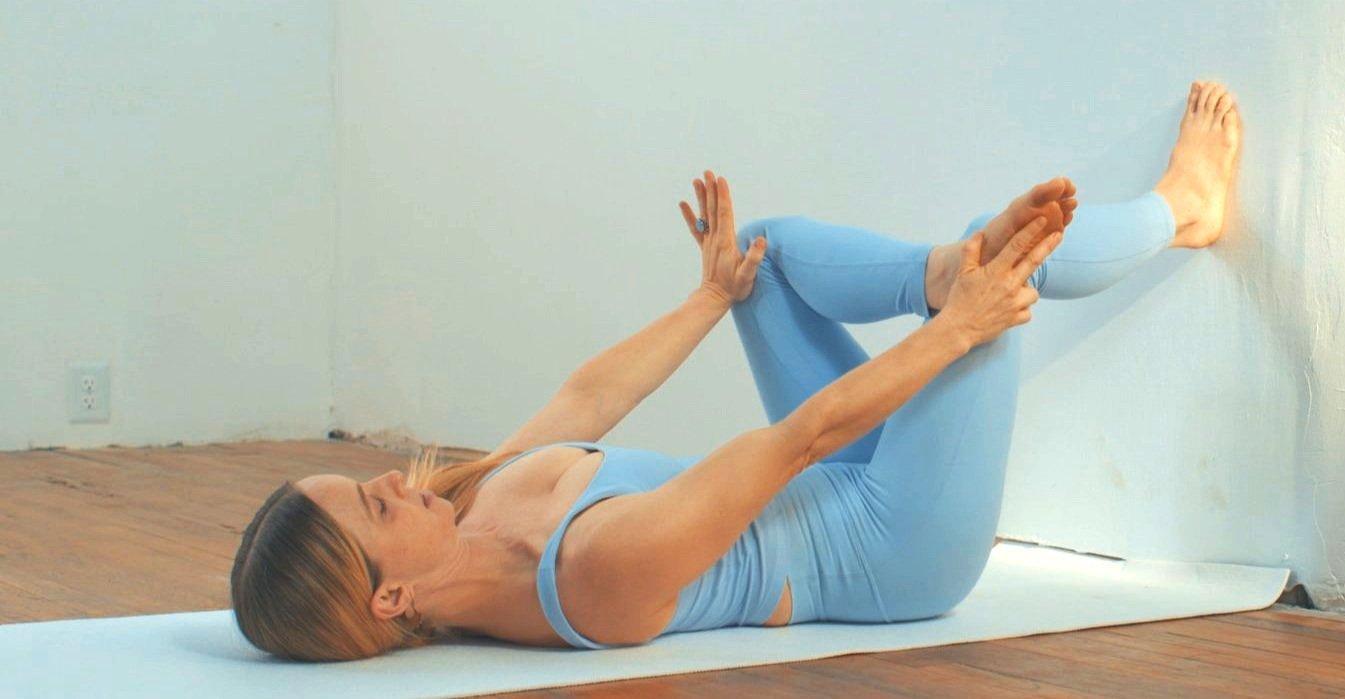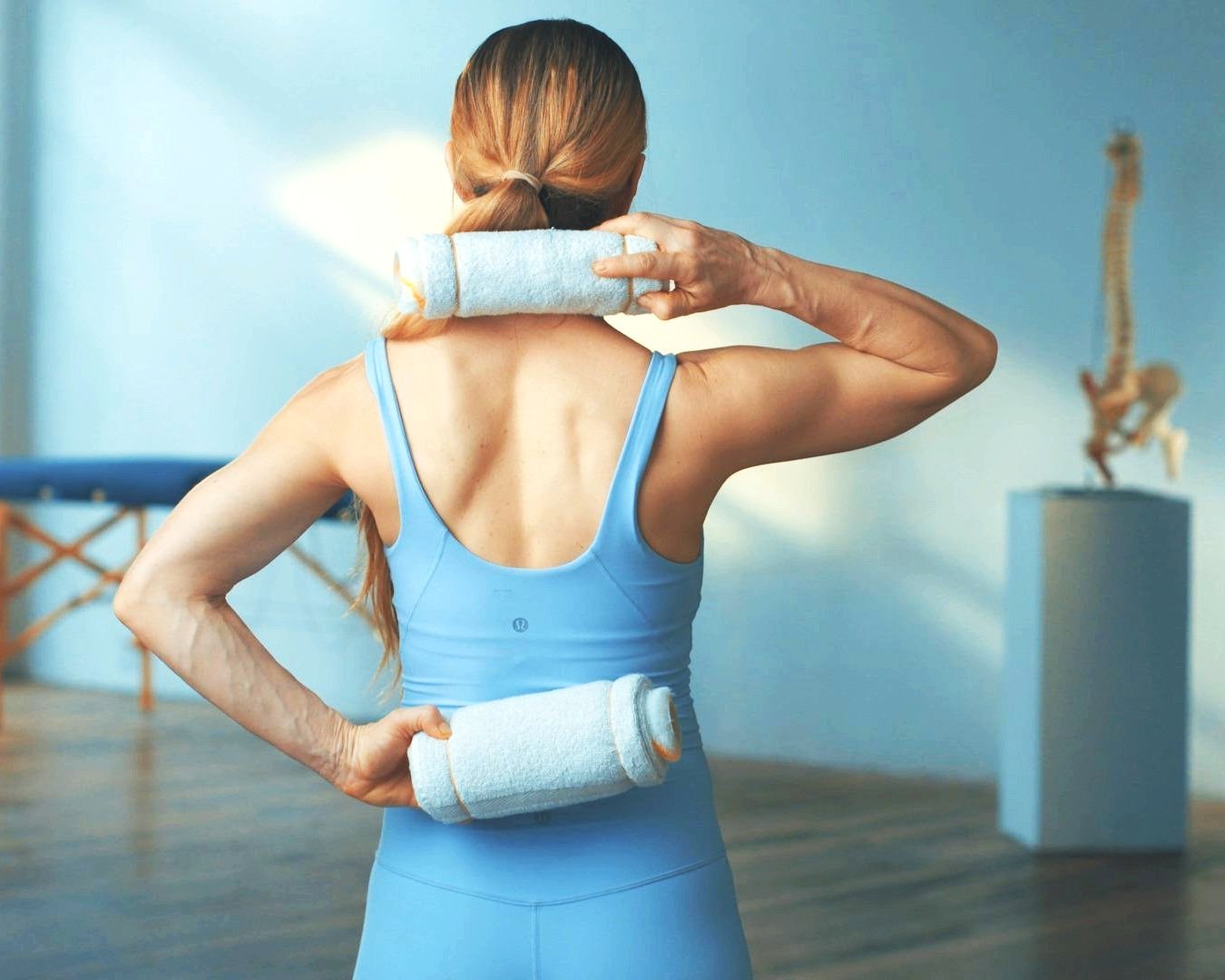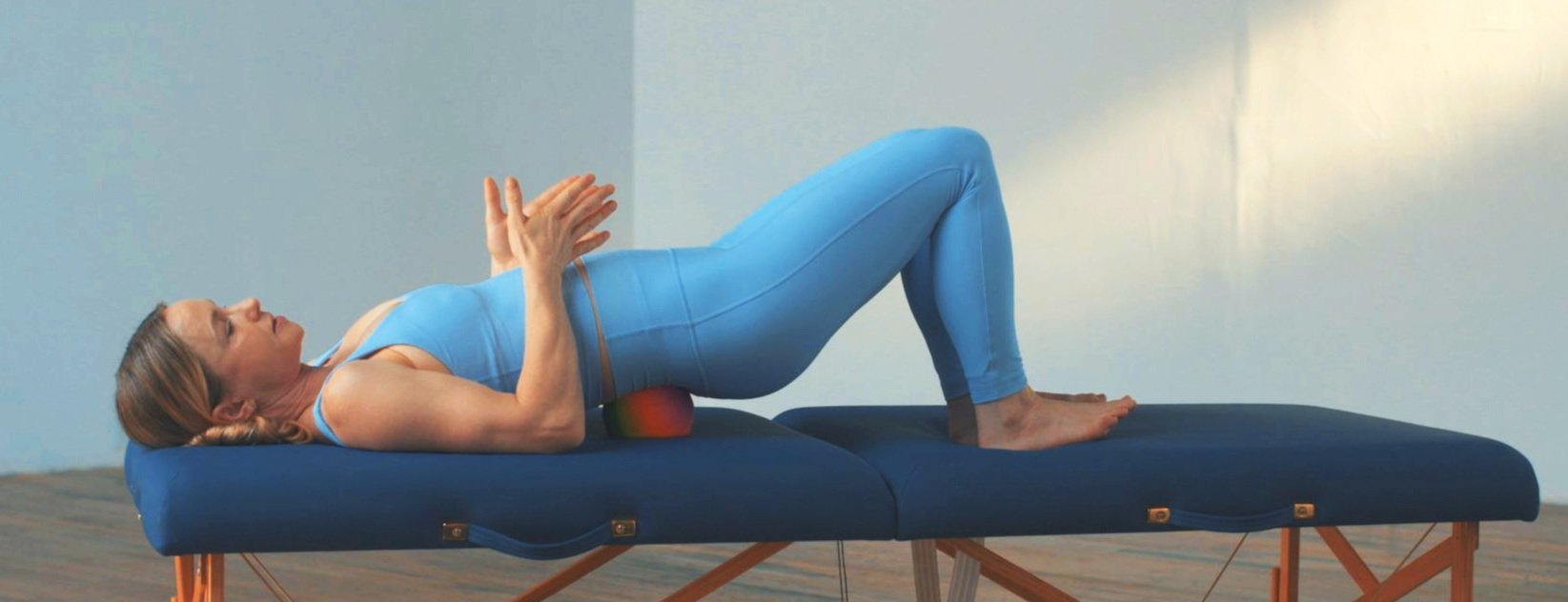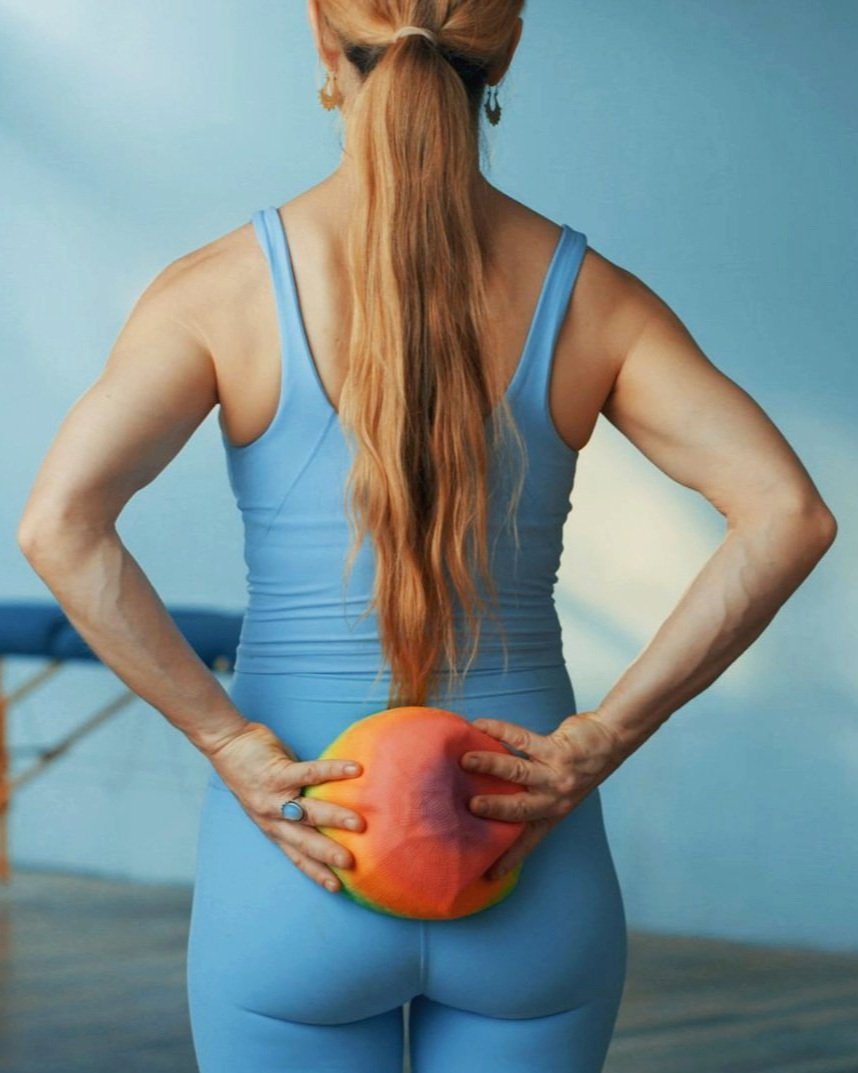SINGLE STRETCH LESSONS
This series of video tutorials is an answer to the most common questions I receive from clients on self-care for posture, movement and overall body maintenance. I’ve taken my 10 years as a therapist + 20 years as a teacher and distilled down the biggest issues affecting people’s structural and somatic wellness. Now, the tools I offer 1-on-1 in my clinic are available online and at your fingertips!
On this page you’ll find individual lessons for particular stretches. Some using tools, some not. Individual lessons are great if you’ve already been a client of mine, heard my many spiels - and would simply like a refresher of something we’ve gone over in clinic. If you’re new to my work, consider checking out bundles of lessons based on body area, or the complete collection of lessons.
-
The Belly Ball is used to release tension in the abdomen.
Tension in the abdomen impedes our wellness in myriad ways, ranging from gut issues, respiratory & cardiac stress, anxiety, and back pain.
This passive release is an ideal option that provides both freedom and support. By using a belly ball, we help balance and regulate the function of our core muscles, such as psoas.When core muscles operate appropriately, our bodies operate within their ideal “economy of motion” saving any extra energy for better organ function, deeper sleep and overall enjoyment of life.
-
The Pelvic Ball is used to give comfort and balance to the pelvis.
When we use this tool we cradle and float the pelvic bones and joints. This gives their relationships and opportunity to find symmetry imbalance, and gives us a deep sense of relief and comfort. -
When we sit in a slouched position too often or too long - or we lift a heavy object with poor ergonomics - we can displace the sacral bone in our pelvis. Standing up, bending over, lifting objects and even rolling over in bed can be difficult and even painful.
The Sacral Ball tutorial shows you how to use a small ball to reposition the sacrum into place in order to relieve pain and increase energy.
-
This video tutorial delivers instructions on how to use half balls. Half balls are a hemispherical rubber ball with which to mobilize and lengthen tissue in the feet as well as freeing movement in the joints.
When our feet feel free, we have good spring function in the arch of the foot which gives great shock absorption to the rest of the body throughout movement.
Without this, we experience limited ankle, knee and hip function over time. This limited function can cause imbalance, and lead to accident and injury. Freeing our feet means better stability, more grounded connection with the earth, and better support throughout our structure.
-
A set of simple household Paint Rollers is marvelous for creating space between vertebrae in our neck and low back.
The specific size of a paint roller combined with its resistance makes it very effective at stretching ligaments and tendons in these areas of the spine, and can even allow for gentle realignment of bones. -
This tutorial delivers instructions on how to use hip blocks.
You can use Hip Blocks, also known as sacral or pelvic blocks, to balance the relationship between both hips, as well as their relationship to the sacral bone and the sacroiliac joints.
Finding proper alignment of the hips and balance in these joints allows for greater comfort, range of motion and general sense of ease in the body.
An osteopath will tell you the importance of balanced hips, as will many chiropractors (depending on their method of training). Unfortunately, this is not an issue that has been expanded on in research science. However, a brief google of “Common Compensatory Pattern” will reveal to you how ubiquitous and stressful this trend of misalignment can be on the average human. -
The goal of the Monkey Stretch is to relieve tension in the shoulder, arm, hand and neck through gentle one-handed hanging.
You’ll need a strap, rope or long strip of cloth as well as a sturdy beam that can bear 50% of your weight (just to be safe). If you don’t have something like this at home, take a walk around your neighborhood. There may be a friendly tree. -
This tutorial is designed to instruct you on how to do the 90 90 or kneeling lunge stretch.
This form of Kneeling Lunge specifically targets the area directly around the hip socket, making it a great stretch for balancing the hips (and even balancing our acquired leg length differences). I call it the 90-90-90 because it puts our legs in a position to create several 90 degree angles.
The effect of stretching these specific portions of the hip flexors means that we can use this stretch to help balance the hips, as well as their connections to the sacral bone through the sacroiliac joints. -
This tutorial is designed to instruct you on how to mobilize your shoulders using a wall. This tutorial will help you find release specifically in pectoralis major as well as minor, which are two major contributors to slumping upper body posture.
So much of what we do in the world is facing forward. Computers, phones, cars, movies, goals… It is important for us to remember to open up our physicality to all other planes of movement.
This stretch helps free the head, neck and shoulders - and helps with both the forward head posture / slumped shoulders associated with tech neck. They will also help you connect to a sense of spaciousness in the upper body. -
OR
Not interested in single lessons?
Get a bundle of lessons, or get the whole collection.




